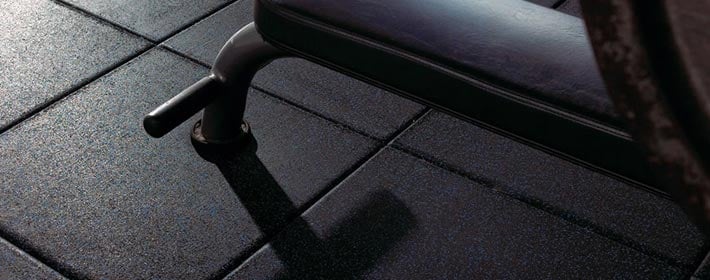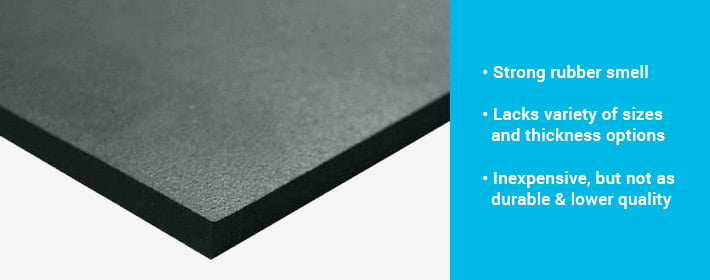Stall Mats vs. Gym Mats—What's the Difference?
What are horse stall mats?
Horse stall mats (commonly referred to as simply stall mats) are, well, exactly what they sound like. They are designed to provide a comfortable floor for large animals. When searching for gym flooring options, you will see this pop up. While stall mats are used in facilities as a rubber flooring solution for training areas, we don’t suggest using stall mats. Don’t be fooled by their price point, and here’s why.
Why aren't stall mats ideal for gym flooring?
Some people believe that because these stall mats are shock absorbent, they can easily work as an exercise mat. But there are several differences. For one, our rolled rubber flooring and puzzle tile rubber flooring has the lowest VOC count (that rubber smell) on the market. We can’t say the same for horse stall mats, so you’ll be working out with a very strong rubber smell. Try holding a plank with your nose a few inches from a stall mat—it’s not the most pleasant smell to say the least.
You also won’t find the variety of thicknesses needed to outfit a gym. Most stall mats aren’t created with the level of detail and production quality as actual rubber sport flooring. What you get is an uneven floor surface with seams that look more like a DIY project than a professional installation.
Often times, different sections of your facility require different types or thicknesses of flooring. You want consistency across your facility, but you also want to get the most bang for your buck. Investing in the proper thickness for your flooring not only makes more sense, but also makes sure you’re not spending too much (or too little).
While stall mats are generally inexpensive, you get what you pay for. This means you’re not getting the best protection for your floor, your equipment, and worse, protection for your body. In the long run, you’ll end up replacing your flooring more often, costing you more. Without the proper flooring, members are more likely to slip or injure themselves. These mats also move easily—that’s not exactly something you want your members talking about.

Instead of using low-quality stall mats, invest in safer, premium rubber flooring.
When and where should I put stall mats in my gym?
For gym floors that receive a lot of impact from dropped barbells —such as Olympic weightlifting, powerlifting, or strength training gyms— you need to find flooring that will absorb that shock. We recommend staying away from stall mats altogether. Utilizing proper, high-quality flooring in your facility will not only keep your members and equipment safe, but it will save you money and peace of mind in the long run.
“So if I should avoid using stall mats, what’s the alternative?” Don’t worry, we got your back. We know it could be daunting to jump into a new flooring upgrade. That’s why we’re here to walk you through the entire process—from quoting and free sampling, to learning which type of flooring works best for your needs, and all the way to installation and maintenance, our flooring experts take care of all the hard stuff for you so you can get back to what you do best.
Make the move from stall mats to premium quality rubber flooring
If you’re the type that loves doing your research before jumping in, guess what? We have a great guide you’re not going to want to miss that covers (nearly) everything you need to know about rubber flooring. Head here to check that out.
OR
Jump right in and start a conversation with us! We’d love to hear from you, whether you call, email, chat, or send us a quote request. You’d be surprised how easy it is.
Empower your staff and reassure your community with our FREE downloadable cleaning and disinfecting guides for fitness centers, educational settings, hospitality facilities and more.
Topics from this blog: Product Resources
Back




